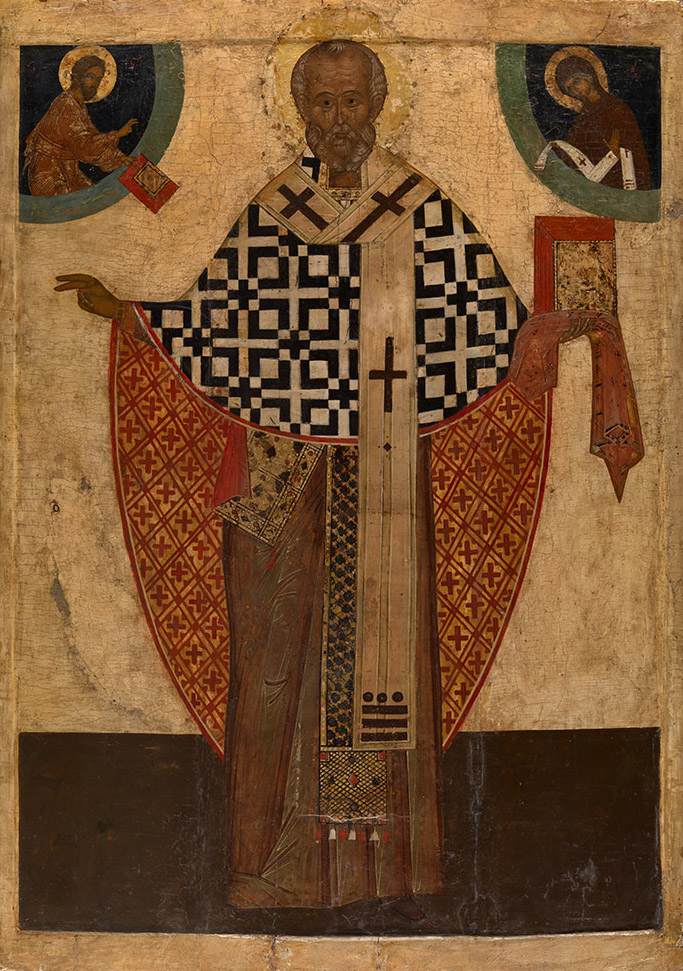MacDougall Auctions 2-3 December 2009
2 December 2009

37. AN IMPORTANT ICON OF ST NICHOLAS OF ZARAISK
NOVGOROD REGION, SECOND QUARTER TO MID 16TH CENTURY
103.5 by 72.5 cm.
150,000-200,000 pounds
This icon is a fine example of traditional Russian iconography of St Nicholas, the Archbishop of Myra in Lycea, depicted here wearing full episcopal vestments, with his hands spread, one in blessing, the other holding the Gospels. Already in the 16th century this ancient iconographic type was known in Russia as “of Zaraisk” after the name of the now-lost wonder-working icon of the saint, brought to the town of Zaraisk from Korsun (Kherson), where it became famous for numerous miracles. The “Zaraisk” image often features in 16th-century art, where it usually appears as the central part of the vita icons. Only a few examples of the large single full-length figure of St Nicholas of Zaraisk, intended for the veneration tier of an iconostasis, are extant, which renders this icon particularly important.
The archepiscopal festive vestment (polystavron) of St Nicholas is a characteristic feature of the icon; it is decorated with large black geometric crosses and the orange lining is dotted with small vermilion crosses. Apart from the light-coloured narrow omophorion, coming down low from his shoulders, the saint is also clad in a long golden stole and an epigonation adorned with ‘chased’ ornamentation and precious stones, which makes the image appear particularly solemn and festive. Unlike other icons of the “Zaraisk” iconography, our St Nicholas has a closed Gospel book, which he holds with his hand covered in a colourful corporal.
Either side of the holy hierarch in the top left and right corners of the icon are “heavenly” segments depicting half-length figures of Christ blessing St Nicholas and handing him the Gospel book and the Mother of God offering him an omophorion, both items referring to the legend of the Miracle of Nicea. According to one version of his life, Nicholas was present at the First Ecumenical Council in Nicea (325), where he was so outraged by Arius’ heretical speech that he smacked him in the face and was immediately defrocked and imprisoned. That night, however, Christ and the Mother of God appeared to him in the dungeon and returned to him his archepiscopal insignia – the Gospel book and the omophorion. The monumental quality of the image and its artistic features, such as the modelling of the faces and execution of the folds of the drapery connect the icon with a trait of Novgorodian icon-painting from the second quarter of the 16th century, perhaps with the art of its northern regions. What makes this work unique is the original artistic interpretation of the subject and the colouristic combinations unusual for Novgorod. One should note the very good preservation of the painting, which has only lost its original background. This icon is of high museum and artistic quality.
Notes on symbols:
* Indicates 5% Import Duty Charge applies.
Ω Indicates 20% Import Duty Charge applies.
§ Indicates Artist's Resale Right applies.
† Indicates Standard VAT scheme applies, and the rate of 20% VAT will be charged on both hammer price and premium.